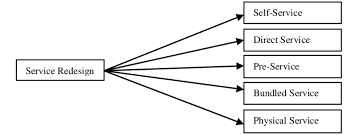A service process is a sequence of activities carried out to provide a service to a customer. The term is often used in manufacturing and logistics to describe how raw materials are turned into finished products, but it is mostly used in customer-oriented activities such as professional services, food delivery, etc.

The service process begins by identifying customers’ needs and ends by satisfying them. It includes all the intermediate stages such as planning, design, production, shipment and delivery of the finished product or service, followed by post-sales support and feedback.
The maintenance process is key to the enterprise. It has five main features:

Divergence: When a service provider deviates from a standard service to meet different customer needs, this is called divergence. With divergence, customers can get the specific services they need rather than the generic ones.
Complexity. Service processes with many steps or interactions can be complex. The process needs to be simple in order to build the right expectations in clients.
Location of Services: Services can be provided in person, online or by telephone. Consider service locations for easy access.
Customer involvement and interaction: Customers need to be involved in the process in order to receive services. This interaction can be in person, online or by telephone.
Services: Services themselves are an important part of the process. Customers pay for it and it should meet their expectations.
Service processes are the backbone of business.
The basic structure of the service process is shown below.
Flowchart refers to the creation of a diagram to show the steps of a process and their relationships. A flow chart describes all the steps in a process.

By looking at the process from a high-level perspective and understanding how all the steps fit together, companies gain valuable information. It shows what can be improved and helps to train new employees.
Once the flowchart has been created, a service flowchart is developed. The service flowchart shows how customers interact with the service process. It includes the stages of the process and shows what happened at each stage.

A service plan can help to identify potential problems and areas for improvement. It will also help organisations to understand how customers interact with the process and their experience.
The next step is to identify the point of failure in the process. A point of failure is where problems can occur. Failures can be caused by human error, equipment failure, etc.
Identifying failure points is key to improving maintenance processes. It is also useful to have contingency plans in case something goes wrong.

A bad example may be missing:
Personnel responsible for customer needs
The right tool for the job
A clear understanding of the process
After identifying failure points in a process, the next step is to check them for failures. Failure checking makes changes to the process to prevent failures from occurring.

There are various ways to prevent service process failures.
Some common methods include:
Add additional staff to meet customer needs
Provide additional training to employees
Install better equipment or tools
Create clearer instructions for the process
The next step is to define service objectives. Service objectives are the goals the business wants to achieve. They can be customer satisfaction, quality, speed of service, etc.

Setting service objectives is important because it helps to monitor progress and ensure that goals are met. It also helps to identify areas that need modification.
Once service objectives have been set, the next step is to redesign processes to achieve these objectives. Here, processes are redesigned to improve quality, speed of service, customer satisfaction and more.

This step can be changed:
the way tasks are performed
the order of tasks
the tools and equipment used
staff training
client interface
When it comes to service delivery, client management is key. Clients can be valuable assets or liabilities. It is important to know how to manage them effectively so that they can become an asset.
There are many ways to manage clients effectively.
Below are the steps that need to be followed.
Recruitment and selection: recruiting people with the right skills and attitude.
Job analysis: understand the work and customer requirements.
Adaptation: educate clients on how to use the service.
Coaching and feedback: Provide coaching and feedback to help clients improve their performance. Provide them with opportunities to further develop their skills.
Motivate top performers: Recognise and reward excellence. Help them understand how their efforts contribute to the company’s success.
Evaluate: Review client performance regularly. Take action to improve their performance if necessary.
Conclusion
The service process describes all the steps involved in providing a service. It starts with the customer’s interest in the product or service and ends with their satisfaction.
The service process is often invisible, but it is the basis for providing exceptional customer service. Understanding and applying its principles can create a superior customer experience that differentiates a business from its competitors.





